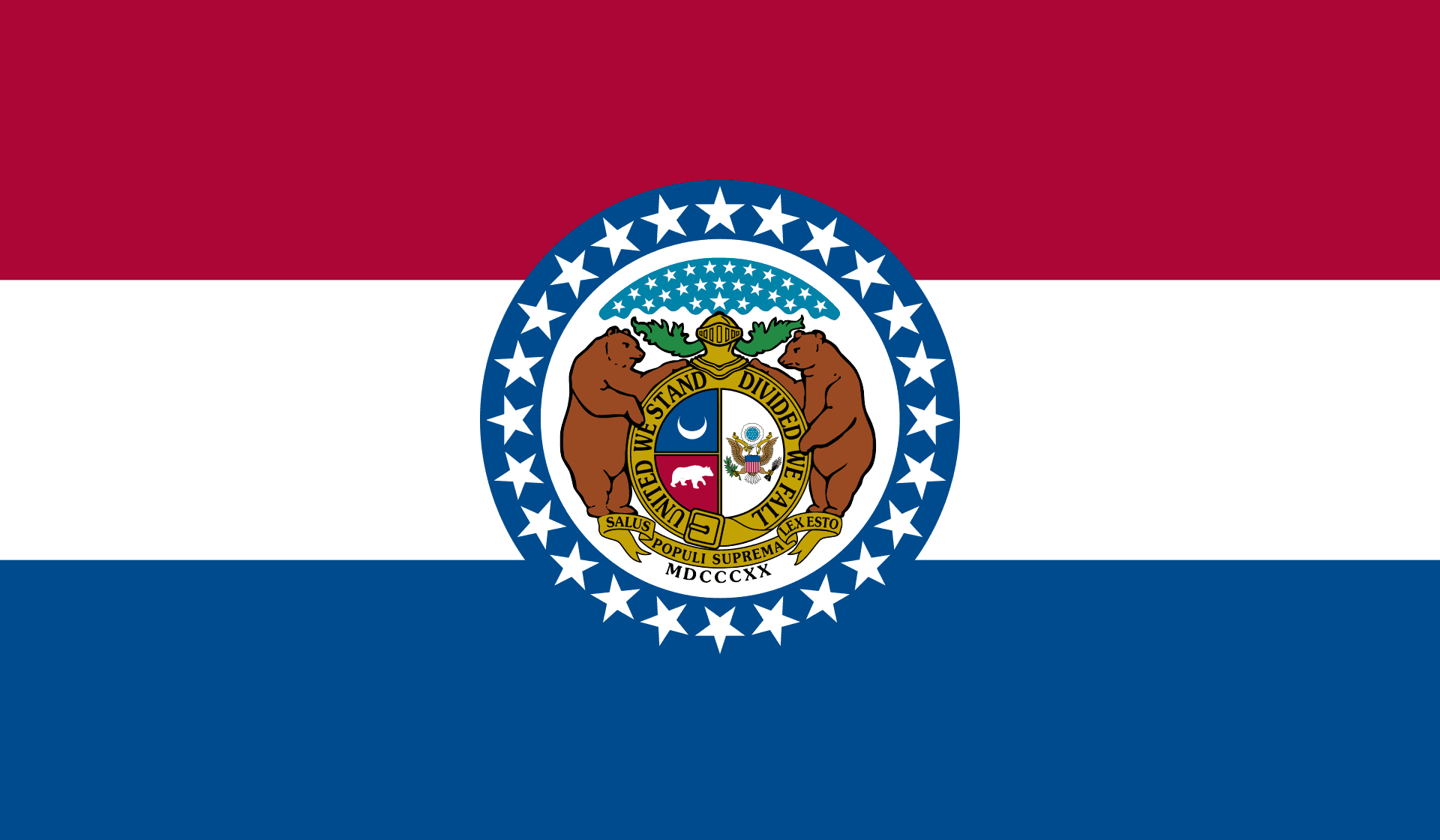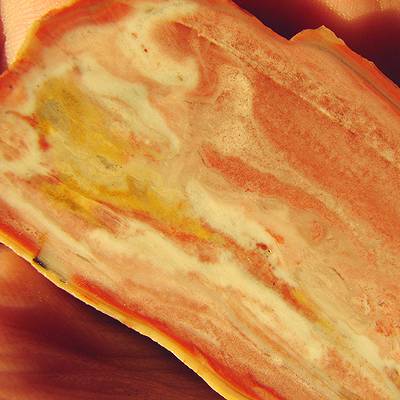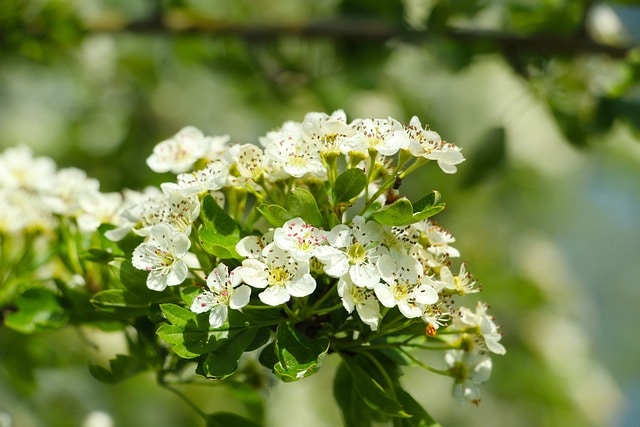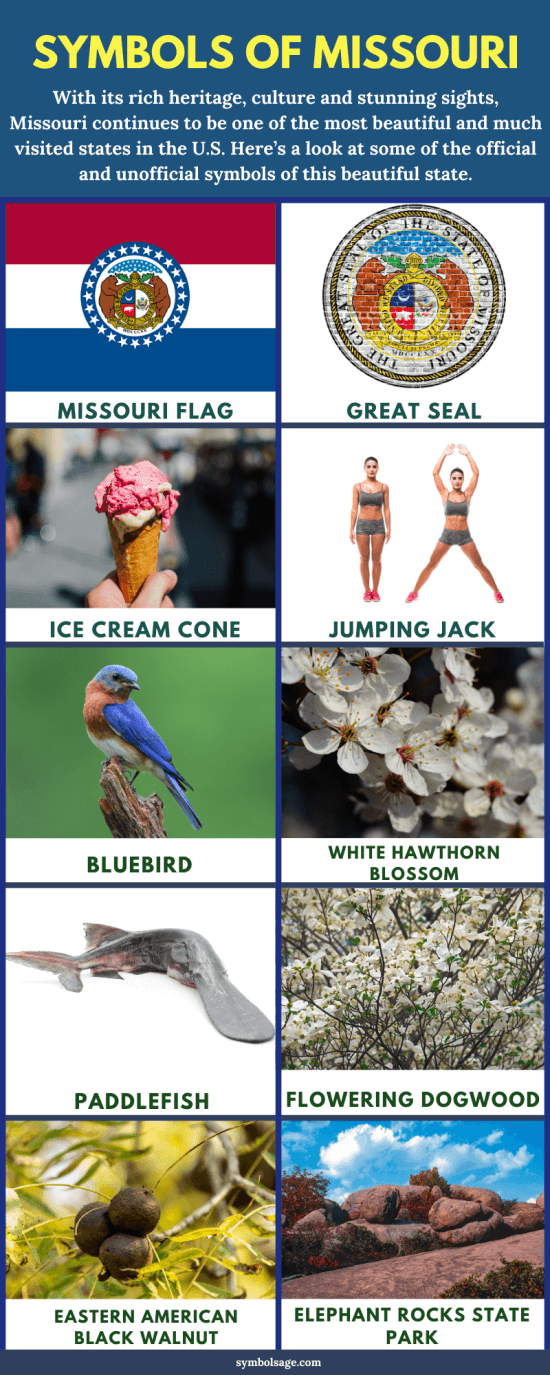
Table of Contents
Located in the Midwestern U.S, Missouri has a population of more than 6 million people, with about 40 million tourists visiting the state each year. The state is famous for its agricultural products, beer-brewing, wine production and stunning landscapes.
Missouri became a state in 1821 and was admitted to the Union as the 24th state of the United States of America. With its rich heritage, culture and stunning sights to see, Missouri continues to be one of the most beautiful and much visited states in the U.S. Here’s a quick look at some of the official and unofficial symbols of this beautiful state.
Flag of Missouri
Almost 100 years after admission into the Union, Missouri adopted its official flag in March, 1913. Designed by the late Mrs. Marie Oliver, wife of a former State Senator R.B. Oliver, the flag displays three equal-sized, horizontal stripes colored red, white and blue. The red band is said to represent valor, the white symbolizes purity and the blue represents permanency, vigilance and justice.

In the center of the flag is the coat of arms of Missouri inside a blue circle, containing 24 stars which denote that Missouri is the 24th U.S. state.
Great Seal of Missouri
Adopted by the Missouri General Assembly in 1822, the center of Great Seal of Missouri is divided in two parts. On the right side is the U.S. coat of arms with the bald eagle, symbolizing the strength of the nation and that both the power of war and peace lies with the federal government.

On the left is a grizzly bear and a crescent moon which is symbolic of the state itself at the time of its creation, a state with a small population and wealth that would increase like the crescent moon. The words “ United we stand, divided we fall” surrounds the central emblem.
The two grizzly bears on either side of the emblem symbolize the strength of the state and the bravery of its citizens and the scroll beneath them bears the state motto: ‘Salus Populi Suprema Lex Esto’ meaning ‘Let the welfare of the people be the supreme law’. The helmet above represents the state sovereignty and the large star over it surrounded by 23 small stars signifies Missouri’s status (the 24th state).
Ice Cream Cone

In 2008, the ice cream cone was named the official desert of Missouri. Although the cone had already been invented in the late 1800s, a similar creation was introduced at the St. Louise World’s Fair by a Syrian concessionaire, Ernes Hamwi. He sold a crisp pastry called ‘zalabi’ similar to waffles in a booth which stood next to an ice cream vendor.
When the vendor ran out of dishes to sell his ice cream in, Hamwi rolled up one of his zalabis in the shape of a cone and handed it to the vendor who filled it up with ice cream and served it to his customers. The customers enjoyed it and the cone became extremely popular.
Jumping Jack
The jumping jack is a well-known exercise invented by John J. ‘Black Jack’ Pershing, an Army General from Missouri. He came up with this exercise as a training drill for his cadets in the late 1800s. While some say it was named after the General, others state that the move was actually named after a children’s toy which makes the same kind of arm and leg splaying motions when its strings are tugged. Today, there are several variations of this move and some refer to it as the ‘star jump’ because of how it looks.
Mozarkite

Mozarkite is an attractive form of flint, adopted by the General Assembly as the official rock of the state of Missouri in July, 1967. Made of silica with various amounts of chalcedony, Mozarkite appears in several unique colors, most predominantly red, green or purple. When cut and polished into ornamental shapes and bits, the beauty of the rock is enhanced, making it a popular choice for jewelry.
It’s commonly found in Benton County in the soil along ditches, on hill slopes and roadcuts and is collected by lapidarists across the state.
The Bluebird
The bluebird is a passerine bird that’s usually 6.5 to 7 inches in length and covered with a stunning light blue plumage. Its breast is a cinnamon red which turns into a rust-like color in the fall. This little bird is commonly seen in Missouri from early spring up until late November. In 1927 it was named the official bird of the state. Bluebirds are considered to be symbolic of happiness and many cultures believe that their color brings peace, keeping away negative energy. As a spirit animal, the bird almost always means that good news is on the way.
The White Hawthorn Blossom

The white hawthorn blossom, also called the ‘white haw’ or the ‘red haw’, is native to the United States and was named the official floral emblem of the state of Missouri in 1923. The hawthorn is a thorny plant that grows to about 7 meters in height. Its flower has 3-5 styles and about 20 stamens and the fruit has 3-5 nutlets.
This flower is available in several colors including burgundy, yellow, scarlet, red, pink or white which is the most common. Hawthorn flowers are often seen as symbols of love and are popular because of their various health benefits. Missouri is home to more than 75 species of hawthorn, especially in the Ozarks.
The Paddlefish
The paddlefish is a freshwater fish with an elongated snout and a body, resembling that of a shark. Paddlefish are commonly found in Missouri, especially in its three rivers: the Mississippi, the Osage and the Missouri. They’re also found in some of the larger lakes in the state.
Paddlefish are a primitive type of fish with a cartilaginous skeleton and they grow to about 5 feet in length, weighting up to 60 lbs. Many live to about 20 years, but there are also some that make it to 30 years or even more. In 1997, the paddlefish was designated the official aquatic animal of the state of Missouri.
Elephant Rocks State Park
The Elephant Rocks State Park, located in southeast Missouri, is a unique place to visit. Geologists find it unusually intriguing because of the formation of the rocks. The large boulders in the park were formed from granite that’s over 1.5 billion years old and they stand end-to-end, a little like a train of pink-colored circus elephants. Children find it fascinating since they can climb on or between the many boulders. It’s also a popular place for picnics.
The park was created by Dr. John Stafford Brown, a geologist who donated the land to the state of Missouri in 1967. It remains one of the most mysterious and unique landmarks of the state.
Child Abuse Prevention Symbol
In 2012, Missouri designated the blue ribbon as the official symbol for the prevention of child abuse. This action was taken to increase awareness among the public of child abuse. The ribbon was first used in 1989 when Bonnie Finney, a grandmother whose 3-year-old grandson was bound, beaten, bruised and finally murdered by his mother’s boyfriend. His body was found in a toolbox sunk at the bottom of a canal. Finney tied a blue ribbon on her van in remembrance of her grandson and a reminder to fight for the protection of children everywhere. Finney’s blue ribbon was a signal to her community of the devastating plague that is child abuse. Even today, during April, it’s possible to see many people wearing it in observance of the Child Abuse Prevention Month.
Flowering Dogwood
The flowering dogwood is a type of flowering tree native to North America and Mexico. It’s commonly planted in public and residential areas as an ornamental tree because of its interesting bark structure and showy bracts. The dogwood has tiny yellowish-green flowers that grow in clusters and each flower is surrounded by 4 white petals. The dogwood flowers are most often considered as symbols of rebirth as well as strength, purity and affection. In 1955, the flowering dogwood was adopted as the official state tree of Missouri.
The Eastern American Black Walnut
A species of deciduous tree belonging to the walnut family, the eastern American black walnut is grown mostly in the riparian zones of the U.S. The black walnut is an important tree commercially grown for its deep brown wood and walnuts. The black walnuts are usually shelled commercially and since they provide a distinctive, robust and natural flavour, they’re popularly used in bakery goods, confections and ice creams. The kernel of the walnut is high in protein and unsaturated fat, making it a healthy food choice. Even its shell is used as an abrasive in metal polishing, cleaning and oil well drilling. The black walnut was designated the state tree nut of Missouri in 1990.

Check out our related articles on other popular state symbols:








